|
Printables |
PowerPoints |
Online exercises |
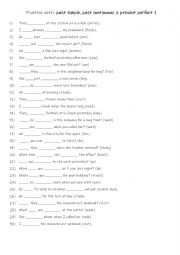
|
A1+ A2 Practise with past simple, past continuous & present perfect 1
Mastering past simple, past continuous, and present perfect is essential for clear and accurate communication in English. The past simple is used for completed actions with a specific time reference, such as "I visited London." The past continuous describes ongoing actions at a specific moment in the past or sets the scene, like "I was reading when...
Level: elementary
Age: 8-100
Type:
Downloads: 122
|
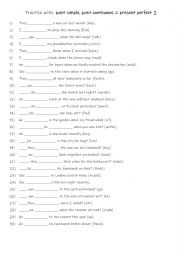
|
A1+ A2 Practise with past simple, past continuous & present perfect 2
First, students need to familiarise themselves with the 3 tenses and their use. Then they read the sentences to work out which one is needed to complete the gap-fill using the given verb in (). Each tense is used 9 times! Answers on page 2
Level: elementary
Age: 8-100
Type:
Downloads: 113
|
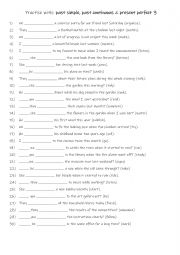
|
A1+ A2 Practise with past simple, past continuous & present perfect 3
First, students need to familiarise themselves with the 3 tenses and their use. Then they read the sentences to work out which one is needed to complete the gap-fill using the given verb in (). Each tense is used 9 times! Answers on page 2
Level: elementary
Age: 9-100
Type:
Downloads: 122
|
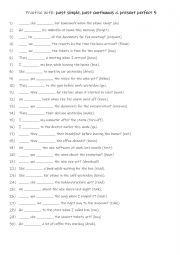
|
A1+ A2 Practise with past simple, past continuous & present perfect 5
First, students need to familiarise themselves with the 3 tenses and their use. Then they read the sentences to work out which one is needed to complete the gap-fill using the given verb in (). Each tense is used 9 times! Answers on page 2
Level: elementary
Age: 7-100
Type:
Downloads: 138
|
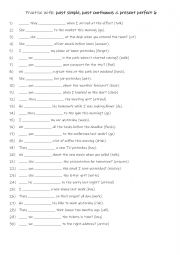
|
A1+ A2 Practise with past simple, past continuous & present perfect 6
First, students need to familiarise themselves with the 3 tenses and their use. Then they read the sentences to work out which one is needed to complete the gap-fill using the given verb in (). Each tense is used 9 times! Answers on page 2
Level: elementary
Age: 7-100
Type:
Downloads: 130
|

|
A1+ A2 Practise with present simple-present continuous-present perfect simple- past simple-past continuous- will future & going to 1
Students should learn to practise tenses like the present simple, present continuous, present perfect simple, past simple, past continuous, will future, and going to because they are essential for expressing actions in different time frames. These tenses help students describe routines, ongoing events, past experiences, and future plans clearly and...
Level: elementary
Age: 8-100
Type:
Downloads: 122
|
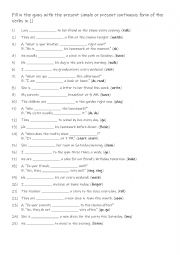
|
A1+ Present simple or continuous
Students read the sentences to work out which tense is required to complete the gap-fill using the given verb in bold i (). Answers on page 2.
Level: elementary
Age: 9-100
Type:
Downloads: 117
|
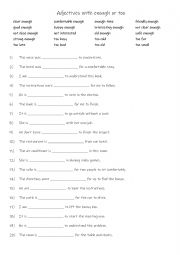
|
A1+- A2 Adjectives with enough or too
Students read the sentences, then complete the gap-fill with the logical choice in bold. After checking the answers this worksheet could be used as a speaking reinforcement activity for pairs or small groups. Answers on page 2.
Level: elementary
Age: 8-100
Type:
Downloads: 117
|
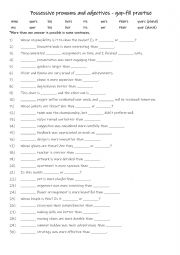
|
A1+- A2 Possessive pronouns and adjectives - gap-fill practise
Students familiarise themselves with all the possessive pronouns and adjectives and their use. Then they read the sentences to see which form is required to complete the sentences. Answers on page 2.
Level: elementary
Age: 8-100
Type:
Downloads: 105
|
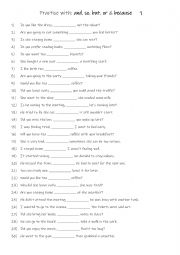
|
A1+- A2 Practise with and, so, but, or & because 1
Students should learn conjunctions like and, so, but, or, and because as they are fundamental for creating cohesive and meaningful sentences. These words help connect ideas logically, express relationships like addition, contrast, cause-and-effect, and choice, and improve the overall flow of speech and writing. By mastering these conjunctions, stud...
Level: elementary
Age: 9-100
Type:
Downloads: 122
|
|
|
|
|












